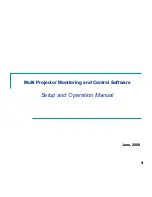
Chapter 4. Red Hat Network Website
49
4.4.2.5. Inactive
The
Inactive
page displays the registered systems that have not checked into RHN for 24 hours or
more. When the
Red Hat Update Agent
connects to RHN to see if there are any updates available or
if any actions have been scheduled, this is considered a checkin. If you are seeing a message indicating
checkins are not taking place, the RHN client on your system is not successfully reaching Red Hat
Network for some reason. This indicates:
•
The system is not entitled to any RHN service. System Profiles that remain unentitled for 180 days
(6 months) are removed.
•
The system is entitled, but the Red Hat Network Daemon has been disabled on the system. Refer to
Chapter 5
Red Hat Network Daemon
for instructions on restarting and troubleshooting.
•
The system is behind a firewall that does not allow connections over https (port 443).
•
The system is behind a proxy that has not been properly configured.
•
Some other barrier exists between the system and the RHN Servers.
4.4.2.6. System Details
If you click on the name of a system on any page, it will display the
System Details
page for the
system. From here, you may modify this information or remove the system altogether by clicking the
delete system
link on the top-right corner.
The
System Details
page is further divided into tabs:
•
Details
— Displays information about the system. This is the first tab you see when you click on a
system. It offers direct access to some of the functionality provided in subsequent tabs. For instance,
under the System Info heading, a message should appear describing the status of this machine. If it
states "Critical updates available" you may click the
update now
link to apply all relevant Errata
Updates to the individual system, as you would under the
Errata
tab.
In addition, some functions can be accessed only on this tab. Most importantly, a system may be
locked by clicking the
Lock system
link near the bottom-left corner of the page. This prohibits the
scheduling of any action through RHN that would affect the system, including package updates and
system reboots. To undo this, click the
Unlock system
link in the same location.
The packages will be updated by the RHN Daemon. You must have the RHN Daemon enabled
on your systems. Refer to Chapter 5
Red Hat Network Daemon
for more details. The Details tab
contains the following subsets of information:
•
Overview
— A summary of the system’s details. In addition to the system status message,
the
Overview
subtab contains basic System Info, Subscribed Channels, and System Properties.
Clicking the
Alter Channel Subscriptions
link takes you to the
Channels
tab, while clicking
the
Edit these properties
link takes you to the
Properties
subtab. See the following sections for
more information.
•
Properties
— The profile name, entitlement level, notification choice, daily summary, auto-
Errata update, and physical location of the system, including street address, city, state, country,
building, room, and rack. To modify this information, make your changes and click the
Update
Properties
button. Note that many of these properties can be set for multiple systems at once
through the
System Set Manager
interface. Refer to Section 4.4.4
System Set Manager
for de-
tails. The following properties deserve additional explanation:
•
Receive Notifications of Updates/Errata
— This setting keeps you abreast of all advisories
pertaining to the system. Anytime an update is produced and released for the system, a notifi-
cation is sent via email.
Содержание NETWORK 3.2 - PROVISIONING
Страница 1: ...Red Hat Network 3 2 Provisioning Reference Guide...
Страница 6: ......
Страница 16: ...6 Chapter 1 What is Red Hat Network...
Страница 48: ...38 Chapter 3 Red Hat Network Alert Notification Tool...
Страница 106: ...96 Chapter 6 Red Hat Network Registration Client...
Страница 114: ...104 Appendix A Command Line Config Management Tools...
Страница 118: ...108 Appendix B RHN API Access...
Страница 124: ...114 Glossary...
















































